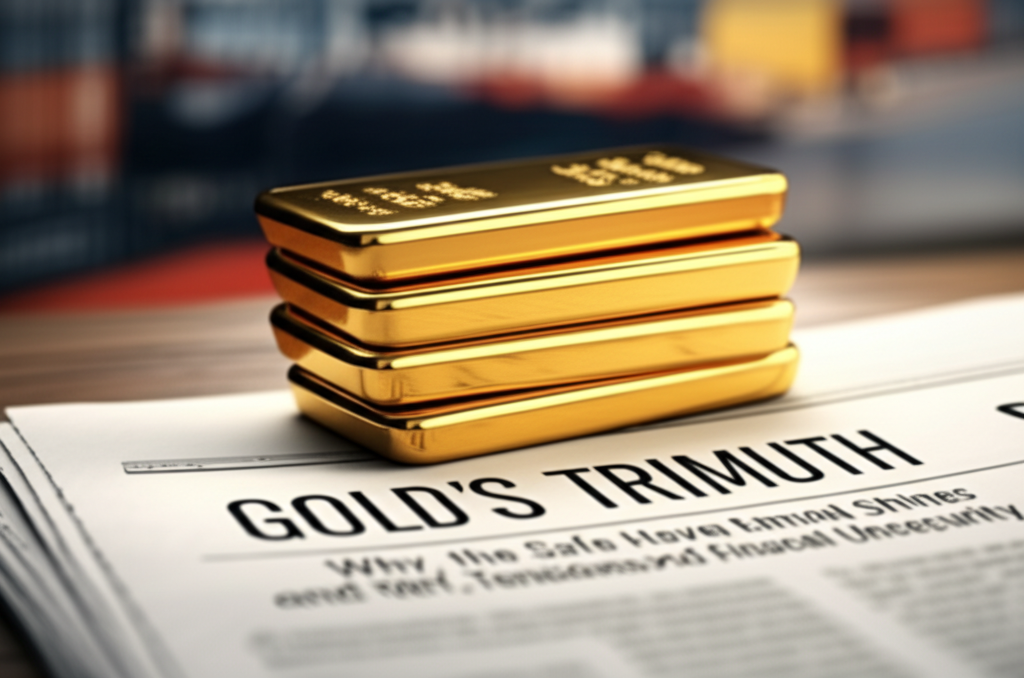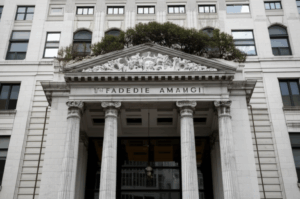Gold Is Victorious Amid Tariff and Fiscal Uncertainty
In a global economic landscape increasingly characterized by unpredictability, gold has once again demonstrated its time-honored role as a safe-haven asset, shining brightest precisely when traditional markets falter. As trade tensions escalate and national budgets face intense scrutiny, the precious metal has not merely held its own but has ascended, validating its reputation as a reliable store of value when the winds of economic uncertainty blow strongest. For young investors navigating their formative years in finance, understanding gold’s resilience in such turbulent conditions offers crucial insights into portfolio diversification and risk management.
The current environment is dominated by two significant headwinds: persistent tariff disputes and escalating fiscal uncertainty across major economies. Tariffs, essentially taxes on imported goods, have emerged as a primary tool in international trade negotiations, but their implementation carries significant economic ramifications. They disrupt established global supply chains, raise costs for businesses and consumers, and can trigger retaliatory measures that stifle international trade volumes. The ripple effect is profound: corporate earnings may decline as input costs rise and demand potentially cools, leading to volatility in equity markets. Furthermore, the inflationary pressure from tariffs can erode the purchasing power of currencies. In such a scenario, investors typically seek refuge in assets that are less susceptible to these economic shocks. Gold, being a tangible commodity with intrinsic value not tied to any single government’s promise or company’s profit margins, becomes an attractive alternative. Its historical role as a hedge against inflation and currency depreciation makes it a natural choice for those looking to protect their capital from the eroding effects of trade wars.
Complementing the tariff-induced anxiety is the growing specter of fiscal uncertainty. Governments worldwide are grappling with swelling national debts, substantial budget deficits, and the ongoing challenge of funding public services while maintaining economic stability. Debates over taxation, spending priorities, and the long-term sustainability of public finances create a climate of apprehension. This fiscal precariousness can manifest in various ways: concerns about a government’s ability to service its debt, potential credit rating downgrades, or even fears of governments resorting to printing more money, which further devalues a currency. When confidence in sovereign bonds and fiat currencies wavers, the appeal of gold intensifies. Unlike paper money or government bonds, gold carries no counterparty risk – its value is not contingent on the solvency of a government or financial institution. It’s a physical asset, universally recognized and historically immune to the political machinations of fiscal policy debates. Investors, sensing potential instability or a loss of purchasing power in their domestic currency, often pivot towards gold as a reliable medium for wealth preservation.
Moreover, the current low-interest-rate environment in many developed economies further burnishes gold’s appeal. Traditionally, gold is a non-yielding asset, meaning it doesn’t pay dividends or interest, making it less attractive when interest rates on bonds are high. However, with central banks maintaining historically low rates to stimulate economic growth, the opportunity cost of holding gold diminishes significantly. In some cases, real interest rates (nominal rates minus inflation) are even negative, meaning bondholders are effectively losing purchasing power. This makes gold, which has the potential for capital appreciation during periods of uncertainty, a more compelling option compared to traditional fixed-income investments. This nuanced interplay of trade policy, fiscal health, and monetary policy has converged to create a potent tailwind for gold prices.
For young adults building their financial foundations, gold’s recent performance offers a vital lesson in the importance of diversification and understanding macro-economic drivers. While equities offer growth potential and bonds provide stability, the inclusion of uncorrelated assets like gold can provide a crucial buffer against systemic risks. Its victory amid the current maelstrom of tariff disputes and fiscal ambiguities is not merely a transient market trend; it’s a reaffirmation of gold’s enduring utility as a hedge against volatility and a store of value in an increasingly complex and uncertain global economy. As long as these fundamental uncertainties persist, the precious metal is likely to remain a favored haven for investors seeking refuge from the storm.





